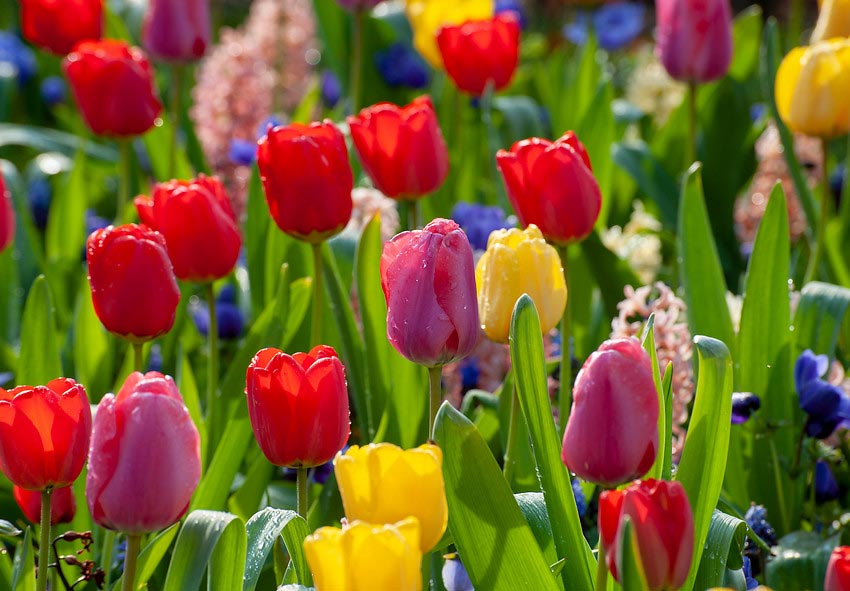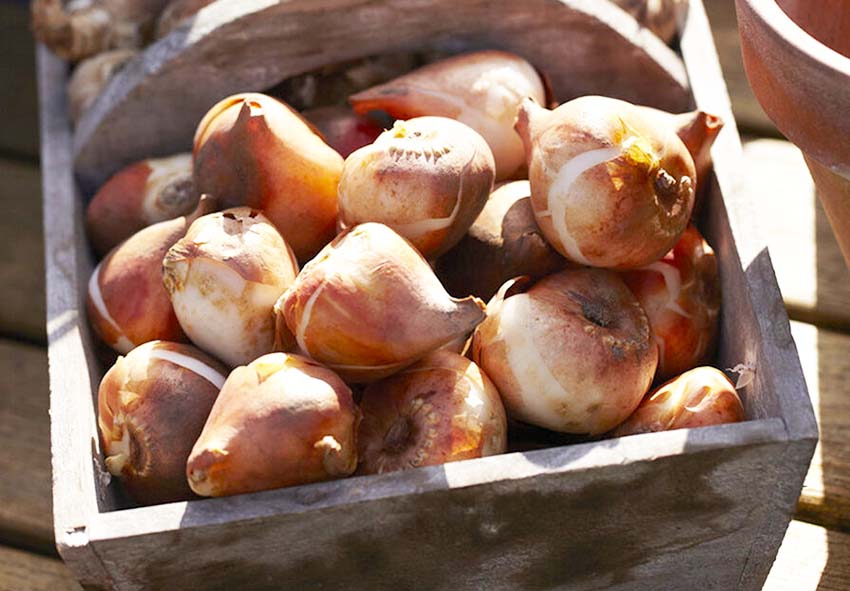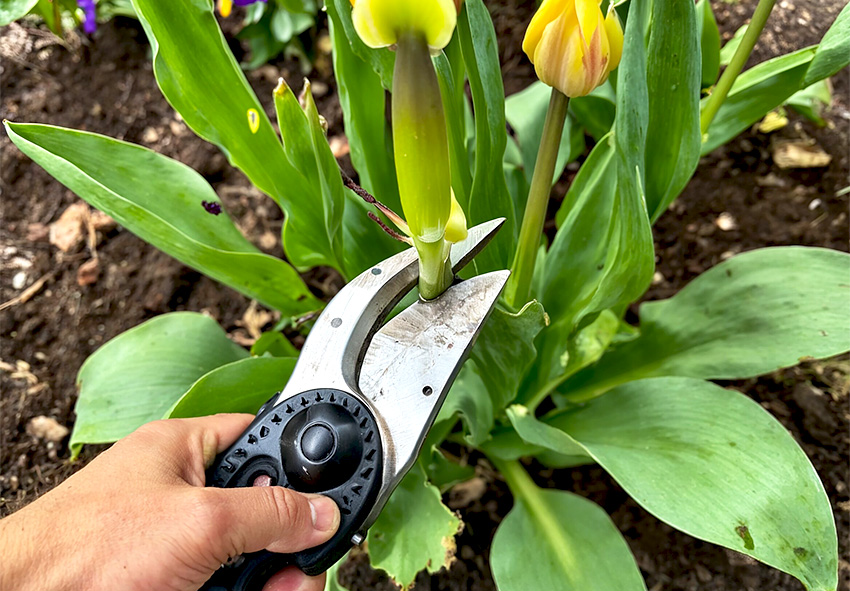Tulips are one of the most admired spring flowers, but their beauty doesn’t end when the blooms fade. Proper tulip care after flowering is essential to keep bulbs healthy and prepare them for next year’s vibrant display. By following simple post-bloom tulip care steps, you can ensure strong bulbs and even more spectacular tulips in the following season. Our gardening blog is a perfect place to find all the information you need!
Understanding Tulip Bloom Cycle

Before diving into post-bloom tulip care, it’s important to understand the natural growth cycle of tulips. Knowing what happens to the plant after flowering helps gardeners make the right decisions for long-term success.
What Happens After Tulips Flower
Once tulips finish flowering, the petals begin to drop, and the plant shifts its focus from blooming to bulb development. During this stage, energy is directed from the leaves into the bulb to store nutrients. Understanding this natural cycle is key to proper tulip care after blooming.
Why Post-Bloom Care Matters
Tulips may finish flowering in spring, but their life cycle doesn’t end there. What you do after the blooms fade determines whether the bulbs will stay strong and return the next year. That’s why post-bloom tulip care ensures healthy bulbs, vibrant flowers, and long-lasting displays season after season:
- Energy Storage in Bulbs – After flowering, tulip leaves continue photosynthesis, sending nutrients to the bulbs for next year’s growth.
- Stronger Blooms Next Spring – Proper care ensures tulips have the strength to produce larger and more colorful flowers.
- Extended Bulb Longevity – Caring for tulips after blooming reduces stress on bulbs, allowing them to thrive for multiple seasons.
- Prevention of Disease and Rot – Post-bloom steps like proper watering and foliage management help protect bulbs from decay.
- Improved Garden Aesthetics – By managing foliage and companion planting, gardens stay attractive even after tulip blooms fade.
Essential Steps for Tulip Care After Flowering
Once tulips finish blooming, they require specific steps to ensure the bulbs stay healthy. Each action during this phase influences how well the flowers return next year.
Deadheading Tulips
Deadheading tulips involves removing spent flowers once they fade. This prevents the plant from using energy to produce seeds, redirecting nutrients back to the bulb. The best method is to snip off the flower head while leaving the leaves untouched.
Foliage Management
It may be tempting to cut tulip leaves immediately after blooms fade, but foliage plays a critical role in bulb health. The leaves should remain until they naturally yellow and die back, as they continue to feed the bulb. Removing them too soon can harm next year’s tulip growth.
Watering and Fertilization
Watering tulips after blooming keeps bulbs hydrated as they store nutrients, but the soil should remain moist, not soggy. A balanced fertilizer applied right after flowering can also strengthen bulbs for the next season. Consistent care during this phase is vital for healthy tulip bulb development.
Caring for Tulip Bulbs After Blooming

Tulip bulbs need special attention once flowering ends. Proper lifting, storage, and replanting practices protect them and set the stage for future blooms.
Lifting and Storing Tulip Bulbs
Not all tulip varieties can be left in the ground year after year. Lifting and storing bulbs helps protect them from rot, pests, and harsh weather conditions. This process also allows gardeners to replant healthy bulbs in the best conditions for vibrant blooms next spring:
- Timing the Lift – Wait until the foliage has fully yellowed and died back before digging up tulip bulbs.
- Gentle Handling – Use a garden fork to carefully lift bulbs, avoiding cuts or bruises that can lead to rot.
- Cleaning the Bulbs – Remove excess soil, but don’t wash them; moisture increases the risk of fungal infections.
- Proper Curing – Let bulbs dry in a cool, shaded area for several days before storing.
- Storage Conditions – Keep bulbs in a dry, ventilated container at 60–65°F to prevent mold and preserve viability.
Replanting Tulip Bulbs
Tulip bulb storage only works well if bulbs are replanted at the right time. The best season for replanting is fall when the soil is cool but not frozen. Ensure proper spacing and well-drained soil to give bulbs the ideal environment for establishing roots before winter.
Common Mistakes in Post-Bloom Tulip Care
Even with good intentions, gardeners often make mistakes after tulips finish flowering. Avoiding these errors ensures bulbs remain strong and ready for next spring.
Cutting Leaves Too Early
One of the most common mistakes gardeners make is cutting tulip foliage too early. Without enough time for photosynthesis, bulbs won’t store the nutrients they need. This results in smaller or fewer blooms in the next spring.
Overwatering or Neglect
Tulips are prone to bulb rot if they sit in soggy soil after flowering. On the other hand, neglecting them entirely can cause the bulbs to dry out. A balanced watering approach ensures bulbs remain healthy during the post-bloom period.
Forgetting Fertilizer Application
Some gardeners assume tulips don’t need nutrients after blooming, but fertilizer is essential at this stage. Without extra feeding, bulbs may weaken and produce fewer flowers. A slow-release or balanced fertilizer gives bulbs the strength needed for next year.
Preparing Tulips for Next Season

Good post-bloom tulip care doesn’t stop once bulbs are stored. Preparing for the next season helps maintain healthy bulbs and ensures a more colorful spring display. For more useful tips check out our article about year-round care for tulips.
Seasonal Maintenance Tips
Tulips require year-round attention to keep them thriving season after season. Seasonal maintenance helps ensure bulbs remain healthy, prevent diseases, and encourage stronger blooms. With the right steps in spring, summer, fall, and winter, you can enjoy vibrant tulip displays year after year:
- Spring Tasks – Deadhead spent blooms but leave the foliage to photosynthesize and feed the bulb.
- Summer Care – Lift and store bulbs if needed, or monitor in-ground bulbs for rot in rainy climates.
- Fall Preparation – Replant bulbs at the right depth in well-drained soil for optimal spring growth.
- Winter Protection – Apply mulch in colder regions to insulate bulbs and protect them from freezing.
- Ongoing Checks – Watch for pests, fungal spots, or overcrowding, addressing issues early to keep tulips vigorous.
Companion Planting with Tulips
Planting tulips alongside perennials like hostas, daylilies, or alliums can enhance your garden’s health and appearance. Companion plants help cover fading tulip foliage, keeping garden beds attractive. They also improve soil conditions and reduce pest problems.
Conclusion
Caring for tulips after blooming is the key to maintaining strong, healthy bulbs and ensuring another stunning display next spring. From deadheading and watering to proper tulip bulb storage, every step contributes to long-term success. With the right post-bloom tulip care, your garden will be filled with bright, cheerful tulips year after year!
Frequently Asked Questions (FAQs) about Tulips After Blooming
1. What should I do with tulip flowers after they finish blooming?
Once tulip flowers fade, it’s best to deadhead them by cutting off the spent blooms. This prevents the plant from using energy on seed production. Leave the foliage intact until it yellows and dies back naturally, as it continues to nourish the bulb for next year’s growth.
2. Is it necessary to dig up tulip bulbs every year?
In colder regions, tulip bulbs can often be left in the ground if the soil drains well. However, in warmer or very wet climates, lifting and storing bulbs after the foliage dies back helps prevent rot and ensures better blooms the following season.
3. When is the best time to lift and store tulip bulbs?
The ideal time to lift tulip bulbs is after the foliage has completely turned yellow and dried out, usually in late spring or early summer. At this stage, the bulbs have absorbed enough nutrients for dormancy. Store them in a cool, dry, and well-ventilated place until fall replanting.
4. Can I order tulip bulbs from your online store?
Yes, you can order tulip bulbs from our online store Dutch-bulbs.com. We offer a wide selection of tulip varieties suitable for different climates and preferences. Our bulbs are carefully sourced and stored to ensure they are of the highest quality.
5. Can tulips rebloom every year if left in the ground?
Yes, tulips can rebloom annually if given proper post-bloom care. This includes deadheading flowers, leaving foliage to die back naturally, fertilizing bulbs, and ensuring soil drainage. Overcrowding may reduce flowering over time, so dividing and replanting bulbs every few years helps maintain healthy, vibrant displays.
Published: 05.09.2025
